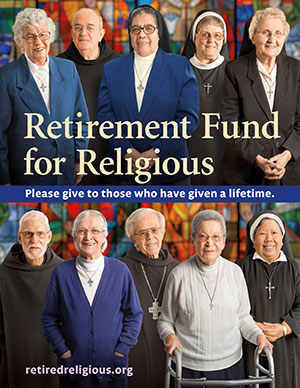 Bishop Peter Jugis celebrates Mass on Christmas Eve at St. Patrick Cathedral in Charlotte in 2020. (Patricia Guilfoyle, Catholic News Herald)As much as some of us would like a few extra days to prepare, Christmas 2021, ready or not, is Saturday, Dec. 25.
Bishop Peter Jugis celebrates Mass on Christmas Eve at St. Patrick Cathedral in Charlotte in 2020. (Patricia Guilfoyle, Catholic News Herald)As much as some of us would like a few extra days to prepare, Christmas 2021, ready or not, is Saturday, Dec. 25.
“How will I possibly finish my shopping and house cleaning by then?” is not the only urgent question that faithful Catholics are asking themselves this week. What about Christmas weekend Masses? Because the holiday falls on Saturday, are Catholics obligated to attend Mass twice?
Yes. Catholics have an obligation to attend Mass on both Christmas Day, Saturday, Dec. 25, and on the following day, Sunday, Dec. 26.
Each obligation must be fulfilled, so one Mass on the afternoon of Christmas will not fulfill both obligations.
Each obligation may be fulfilled by attendance at a Mass celebrated in a Catholic rite on the day itself, or on the evening of the preceding day.
The obligation for Christmas can then be fulfilled by attendance at any Mass on the evening of Christmas Eve, or at any time on Christmas Day.
And the obligation for the Sunday within the Octave of Christmas can be fulfilled by attendance at any Mass on the evening of Christmas Day, or on the Sunday itself.
Some of you (likely those who already have their shopping done and gifts wrapped) may already be looking ahead to New Year's weekend. Do the same obligations apply?
No. Saturday, Jan. 1 is the Solemnity of Mary, but it’s not a holy day of obligation this year. However, Masses will still be offered in observance of the solemnity. Check your local parish’s schedule.
Looking way ahead to next year, the schedule is pretty simple: Christmas Day and New Year’s Day both fall on Sunday.
— Catholic News Agency
 CHARLOTTE — The 34th annual Retirement Fund for Religious collection will be taken up in parishes across the Diocese of Charlotte Dec. 11-12.
CHARLOTTE — The 34th annual Retirement Fund for Religious collection will be taken up in parishes across the Diocese of Charlotte Dec. 11-12.
Coordinated by the U.S. bishops’ National Religious Retirement Office, the national appeal assists hundreds of religious order communities in providing for the ongoing needs of elderly Catholic sisters, brothers and religious order priests.
The U.S. bishops initiated the collection in 1988 to address the significant lack of retirement funding among U.S. religious orders. Distinct from retired priest collections held in respective dioceses for the care of retired diocesan priests, this annual collection benefits eligible religious orders to help underwrite retirement and health-care expenses for nearly 26,330 aging religious.
The 2020 appeal raised $20.7 million, and this past June, the NRRO distributed $25 million in financial assistance to 321 religious communities across the nation. The Charlotte diocese contributed more than $176,019 to the collection last year.
“While this (2020) amount represents a decrease compared to previous years, we are overwhelmed by the outpouring of support – especially in such difficult times,” said Sister Stephanie Still, PBVM (Sisters of the Presentation of the Blessed Virgin Mary), who serves as the NRRO’s executive director. “For me, these gifts are a beautiful expression of the appreciation U.S. Catholics have for the service and witness of our elderly sisters, brothers and religious order priests.”
The religious order communities that benefit from the NRRO collection combine that funding with their own income and savings to help furnish day-to-day necessities, including medications and nursing care, and the distributions may be applied toward immediate retirement needs or invested for future eldercare expenses.
The retirement-funding deficit is rooted in low salaries and changing demographics. Traditionally, Catholic sisters, brothers and religious order priests – often known collectively as “women and men religious” – engaged in ministry for little to no pay. As a result, many of their religious communities lack adequate retirement savings. Elderly religious are also living longer and, according to NRRO data, outnumber younger, wage-earning religious by nearly three to one.
Like many other Americans, religious communities struggle with the ever-rising cost of health care. The total cost of care for religious past age 70 exceeds $1 billion annually. COVID-19 has compounded this already difficult situation.
Through the annual collection, the NRRO helps religious communities address their funding deficits. In addition to direct financial aid, donations make possible resources and services that assist communities in evaluating and preparing for long-term retirement needs.
“As we move forward from this pandemic, remember that all gifts big or small combine to provide generous support for our retired religious,” noted Monsignor Patrick Winslow, vicar general and chancellor of the diocese, in an annual appeal letter to the faithful.
“Please consider making a gift and pray for the retired religious who have given us so much and changed so many lives throughout the United States.”
— SueAnn Howell, Senior reporter. The USCCB and the National Religious Retirement Office contributed.
Learn more
At www.retiredreligious.org: Learn more about the Retirement Fund for Religious collection and who it supports

